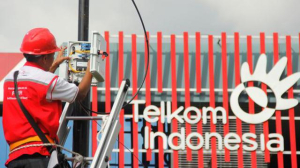Telkom budgets IDR 40 trillion Capex in 2023
Indonesian multinational telecommunications conglomerate PT Telkom Indonesia Tbk (TLKM) has budgeted IDR 40 trillion (US$ 2.64 billion) Capital expenditure (Capex) for 2023, or 25% of the total estimated revenue, for developing mobile, broadband and data center.
Established in 1965, the state-owned company provides various telecommunications services such as fixed lines, mobile, internet, data and multimedia services. In 2021, Telkom total revenue was about IDR 143.2 trillion, according to statista.com.
Better performance in 2023
Telkom SVP of Corporate Communication and Investor Relations, Ahmad Reza, said that the planned expenditure would be for the expansion of the company's mobile, fixed broadband and other ventures, including data centers.
The company is also refining its plans for the initial public offering (IPO) of its subsidiary, PT Sigma Cipta Caraka or Telkomsigma. The IPO is expected to produce the optimal value for both the company and its shareholders. Telkomsigma will become the implementing arm of the Telkom Group's business-to-business information technology (B2B IT) services.
"Telkomsigma is prepared to become a leading player in B2B IT services to serve the corporate market, BUMN (state-owned enterprises), the government and micro, small and medium enterprises (MSMEs)," Reza told investor.id on February 6, 2023.
Separately, Vice President of Corporate Communications at Telkomsel Saki Hamsat Bramono said that Telkom, through its subsidiary Telkomsel, would continue support the business transformation initiatives of PT Fintek Karya Nusantara (Finarya), the provider of LinkAja. LinkAja, an e-money and digital wallet platform, will help enhance the company's long-term performance.
"Telkomsel along with other shareholders, especially from the BUMN ecosystem, will always encourage and continue collaborative efforts with Finarya," he said.
Telkomsel has the potential to raise its investment to strengthen the asset advantages among companies. The company hopes there will be more potential in supporting LinkAja in the future.
Director at Equator Swarna Capital, Hans Kwee, predicted that Telkom's work rate in 2023 would be better than in 2022 due to the more positive market.
Risks in telecommunication industry
There are problems in the telecommunications industry, such as technology disruption that is driven by rapid advancements in areas such as 5G networks, the internet of things (IoT), artificial intelligence (AI) and cloud computing. These advancements are changing the way that people communicate and consume information and entertainment, and are presenting both opportunities and challenges for telecommunications companies.
On one hand, technology disruption offers opportunities for companies to differentiate themselves and provide new and innovative services to customers. For example, the roll-out of 5G networks is enabling faster and more reliable mobile data services and could open up new revenue streams for telecommunications companies.
On the other hand, technology disruption become challenges for companies, as they must invest in new infrastructure and technologies in order to remain competitive. This requires significant capital expenditures. Companies that are unable to keep up with the pace of technological change may fall behind their competitors and lose market share. Additionally, technology disruption can also result in the displacement of traditional telecommunications services, such as fixed-line telephone and broadband services, which can negatively impact the profitability of companies.
There are also infrastructure limitations due to Indonesia's geographical condition and lack of necessary infrastructure to support fast and reliable internet connections. This includes a lack of fiber optic cable networks, insufficient power supply and limited access to satellite or wireless services.
Indonesia has a large and growing population, and as more people gain access to the internet, the existing networks become increasingly congested, leading to slower speeds. There are also many areas in the country which could not connect to the internet.
Other challenges include limited access to electricity and other essential utilities, a lack of infrastructure and investment in rural areas, and a lack of profitability for internet service providers (ISPs) to extend their services to these areas. Additionally, cultural and linguistic differences and a lack of awareness of the benefits of the internet can also limit access and usage in some communities.
The government has made efforts to improve access to the internet in rural areas, but progress has been slow and there is still a long way to go before all citizens have access to the internet. Improving access to the internet in rural areas is important for the country's overall economic development, as it can provide new opportunities for business, education and social engagement.
Already have an account? Sign In
-
Start reading
Freemium
-
Monthly Subscription
30% OFF$26.03
$37.19/MonthCancel anytime
This offer is open to all new subscribers!
Subscribe now -
Yearly Subscription
33% OFF$228.13
$340.5/YearCancel anytime
This offer is open to all new subscribers!
Subscribe now





